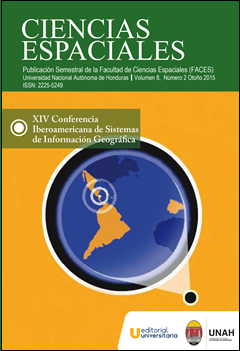Identification and analysis of areas of potential conflict in land use in the ejido of San Carlos de Bariloche, Black River, Patagonia, Argentina, using the technology of Geographic Information Systems (GIS)
DOI:
https://doi.org/10.5377/ce.v8i2.2079Keywords:
Multi-Criteria Evaluation, GIS, Conflicts, Land Use, L.U.C.I.S.Abstract
The objective of this thesis is to identify and analyze suitable potential urban areas to develop primary production activities, urban use expansion as well as nature conservation features through continuous mapping of competence which on combination tend to locate possible conflictual areas among the urban activities mentioned in San Carlos de Bariloche City.
The method of Multi-Criteria-Evaluation (MCE) joined to the Geographic Information System (GIS) provides the right framework for integrating environmental, economic and social factors involved in the soil competence for each activity. The MCE allowed to correctly simulate the spatial patterns of the real evolutionary development on the object of research, urban environment, identifying and assessing each alternative, consulting experts and re-orientating the assessment itself while keeping its aim throughout the decision-making process.
The standard resolution model applied, called Land Use Conflict Identification Strategy (L.U.C.I.S.) was proposed in this thesis as a new progress in spatial analysis and it allowed the detection of potential conflictual areas from a study of localization providing and early picture of the changes in the use of land and previewing those possible future conflicts.
Finally, it has been proved that the combination of MCE and the L.U.C.I .S. as part of a GIS becomes an interesting tool at complex situational analysis. These methods are functionally useful in regional environmental planning processes management and decision making on terms of sustainable development.
Revista Ciencias Espaciales, Volumen 8, Número 2 Otoño, 2015; 227-242
Downloads
1407




